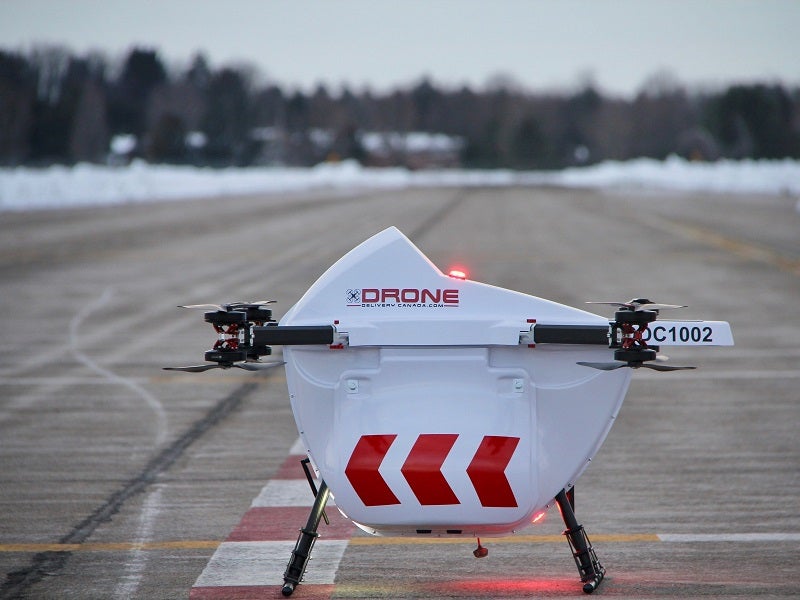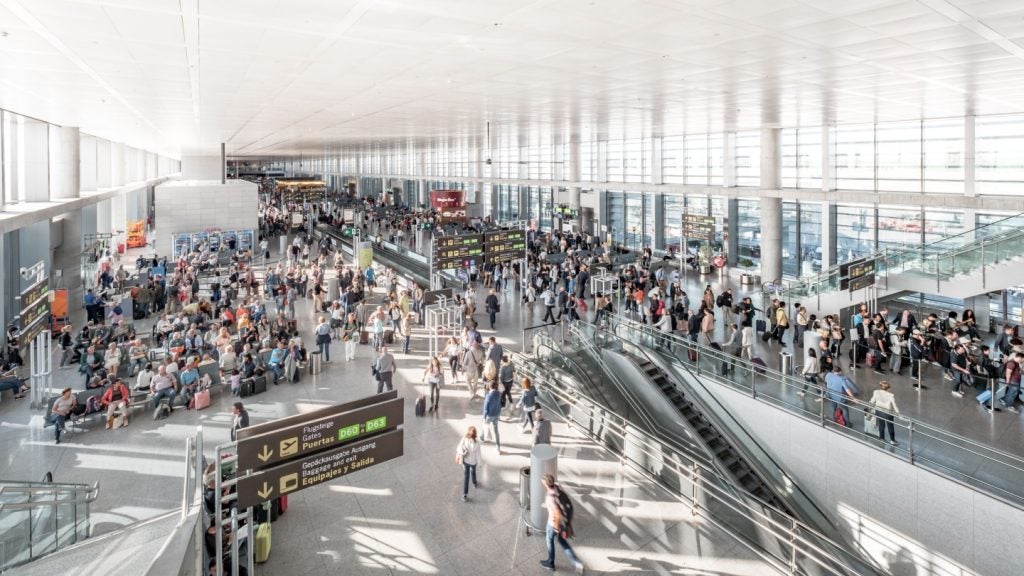
The global commercial drone market is expected to grow by 26% each year from 2016 to reach a value of $10,738m by 2022.
Even airports and airlines can benefit from the maturation of unmanned aerial vehicle (UAV) technology, with applications ranging from airport inspections to bird control and drone delivery.
The International Air Transport Association (IATA) outlines six major technology trends that will impact how future air cargo facilities evolve: augmented reality and wearables; robotics and automated systems; IoT and connected cargo; big data and AI; green buildings; and drones and autonomous vehicles.
Here, we explore three ways that UAVs are already providing assistance at airports.
Airport inspections
One of the ways in which drones can support airport operations and reduce costs is by performing maintenance and inspection activities at airports.
Precision Approach Path Indicator (PAPI) inspections, for example, have traditionally been carried out by flight inspection aircraft, but drones can be equipped to check the PAPI units comply with regulations, including transition angles, symmetry and horizontality, as specified by ICAO.
How well do you really know your competitors?
Access the most comprehensive Company Profiles on the market, powered by GlobalData. Save hours of research. Gain competitive edge.

Thank you!
Your download email will arrive shortly
Not ready to buy yet? Download a free sample
We are confident about the unique quality of our Company Profiles. However, we want you to make the most beneficial decision for your business, so we offer a free sample that you can download by submitting the below form
By GlobalDataCanard, a British and Spanish company, now carries out PAPI inspections at a wide range of airports. These include Paris-Orly (the operation in November 2019 made it the fifth drone inspection from Canard in France), Milan-Linate in Italy, and Geneva International Airport, where Canard also carried out a real-time inspection of the approach lighting systems (ALS).
In August 2019, a Canard drone performed a PAPI check at Edmonton International Airport (EIA), the first drone operation of its kind in Canada.
“For Canard, this operation was a dream come true – we have been writing pages in the aviation books since our creation, and this is the first operation in North America,” said Canard Drones COO Rafael Aguado.
“Our suite of services – highly efficient and easy to operate in any type of airport, from remote locations to huge international hubs – fits perfectly in the needs of the Canadian airport system,” he added.
Drone deliveries

With the global e-commerce market booming – in 2019 it is expected to increase by 20.7% to $3.535tn heading towards $5tn in 2021 – the air cargo industry is also set to grow.
These trends are being driven by changing consumer influences. A survey by McKinsey found that 25% of consumers will pay premium prices for fast delivery and this amount is likely to increase. McKinsey estimates that in the future “autonomous vehicles, including drones, will deliver close to 100% of X2C (business to consumer) and 80% of all items”.
EIA is Canada’s fifth-busiest airport by passenger traffic and the largest major Canadian airport by land area. Proving it is a world leader when it comes to airport-based drone operations, EIA also launched the world’s first drone delivery operations from the airport through agreements with Drone Delivery Canada (DDC) and Air Canada.
“EIA is proud to partner with industry leader DDC to establish Canada’s first airport drone delivery site and drastically modernise cargo logistics and supply chain solutions,” said EIA VP of air service and commercial development Myron Keehn.
“DDC’s DroneSpot at EIA elevates intermodal connectivity to support the growing E-Commerce, Pharmaceuticals, Courier and Oil & Gas sectors. Thanks to our partners like Nav Canada and Transport Canada, our airport is leading in embracing innovation.”
Drone Delivery Canada’s system is particularly useful for deliveries to remote areas and for the pharmaceuticals and healthcare industries. As the system can be installed on any airframe, licensing the technology is part of the business model.
Working with the Canadian Aviation Regulations and Transport Canada flight authorisations means that approved roadways are set up in airspace allowing deliveries to be actioned quickly and reducing the need for delivery vehicles on the road.
Bird control

In another world first at EIA, RoBird, a drone system designed to carry out bird control at airports, was integrated into daily operations for the first time at a major international airport in partnership with AERIUM Analytics.
Bird strikes threaten aircraft safety, and according to ICAO, 90% of them happen during take-off and landing.
RoBird (formerly Clear Flight Solutions) is a remotely-operated, robotic Peregrine Falcon that the company says not only scares birds through its design, but also has the ability to lure flocks away from the airport space.
“We currently operate our RoBird in a variety of places, but taking the step towards full integration within daily operations at an airport is huge,” said Clear Flight Solution CEO Nico Nijenhuis. “For years, there has been a lot of interest from airports. To now officially start integrating our operations at a major Canadian airport is absolutely fantastic.”
There are various strategies already used by airports to control flocks of birds in airspaces and prevent flocks from settling there. One is focused on making it an unwelcome habitat through removing food sources and water. Visual tools are also used, and can include animals such as birds of prey, dogs and lasers to keep the airport zone bird-free.
After carrying out projects in various places and bird populations the company says that RoBird is “highly effective in the majority of cases, and birds do not habituate”. Rather than replacing falconry, however, RoBird is best used in cooperation live falconry sessions which will strengthen the effect and long-term results.
At EIA, RoBird guides birds safely away from air traffic as well as discouraging nesting near airside operations and glide paths.
“Together with the EIA, we look forward to supporting and promoting this incredible integration of UAS [unidentified aerial system] services into airport operations around North America,” said EIA VP of air service and commercial development Myron Keehn.





